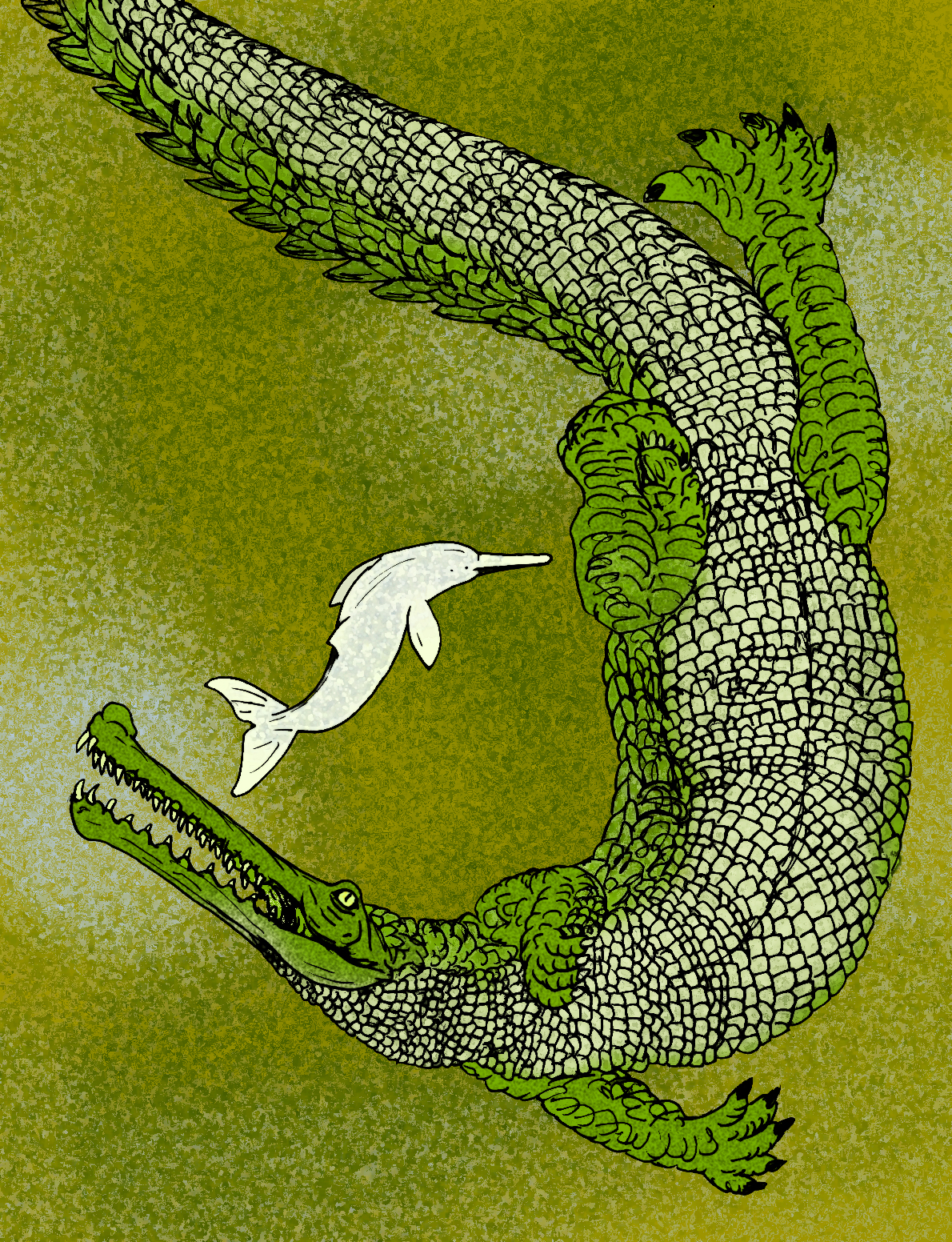- Rhamphosuchus
Taxobox
name = "Rhamphosuchus"
fossil_range =Pliocene 
regnum =Animal ia
phylum = Chordata
classis = Sauropsida
ordo =Crocodylia
familia =Gavialidae
genus = "Rhamphosuchus"
species = "R. crassidens" "Rhamphosuchus" ("Beak crocodile") is an extinct relative of the moderngharial and false gharial. It inhabited what is now the Indian sub-continent in the Miocene and Pliocene. It is only known from incomplete sets of fossils, mostly teeth and skulls, but palaeontologists estimate that it was one of the largest, if not the largest crocodylian that ever lived, reaching an estimated length of 15 to 18 m (50-60 ft). Another crocodylian, "Purussaurus " from the same era but living in Brazil is estimated to be of similar size from an equally incomplete fossil set. The only other crocodylians which even come close are the Late Cretaceous "Deinosuchus " and Early Cretaceous "Sarcosuchus " and also the strange planctivorous "Mourasuchus " which lived at the same time and in the same region with "Purussaurus ". As a relation to the modern gharial, "Rhamphosuchus" almost certainly ate fish, but whether or not it was capable of killing larger animals is unknown.
Wikimedia Foundation. 2010.
